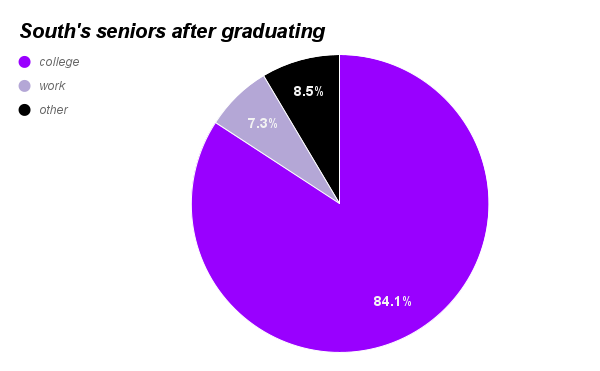Over the past three months, fatal plane crashes have dominated the news and remind us of the occasional tragedies of flying. The midair collision of an American Airlines flight with an army Black Hawk helicopter over Washington D.C. on January 29, 2025 that killed 67 people became the deadliest crash since 2009. Subsequent crashes such as the Medevac jet crash in Philadelphia that killed seven people and the regional airline crash in Nome, Alaska that killed 10 people magnified the immense fear and doubt in US airlines.
Senior Anna Asplund, who traveled to Cancún, México this spring break, had smooth flights but felt anxious when turbulence felt dangerous. “There’s a part of me that’s like ‘this happened to other people,’ it could happen to you too.’”
Senior Kaylee Minton shared this concern despite wanting to enlist in the Air Force and pursue a career in aviation. Minton also stated that some people who can’t afford more well-known airlines may feel more anxious to fly.
Additionally, assistant principal Jaime Miller expressed her uneasiness before flying to Hawaii with her family last week. However, as Miller had flown on eight flights in five airports around the time of the recent crashes, she found no implications that worried her further. “We haven’t seen any change in protocols or expectations and [had] no delays. We’ve had a really positive experience.”
On the other hand, junior Eva Hansen, who flew to Florida, didn’t feel the nerves as much, except during landing.
Senior Claire Johann is a pilot-in-training and has experience in preparing for flight. During spring break, Johann rode the newly created Delta flight that directly flies from Indianapolis to Salt Lake City, Utah. Although Johann had felt some turbulence on the way, she noted that the flight was great.
Preparing to get her license to fly commercial and have a leg up starting at Purdue, Johann is no stranger to safety precautions. When determining normal to dangerous turbulence, Johann listens for a unique sound from the engine and waits for a five-second grace period. “Sometimes you just get set off and it’s completely normal,” Johann said, “but you just always have a little ear out.”
Although crashes seem to happen more often lately, the number of crashes has decreased compared to recent years. According to the National Transportation Safety Board (NTSB), there were 67 and 78 crashes in January and February 2025, respectively, compared to the 80 and 93 last year. Furthermore, fatal crashes typically average around 20 per month for January and February. Yet, in January there were 10 and in February only six. This data accounts for all US civil aviation including commercial and private aircraft. Nonetheless, it is important to note that the recent crashes were the most fatal in a decade.
These crashes, although rare, reveal deeper fractures in regulations, staffing, and the environment. According to CNN, the NTSB doesn’t have the regulatory authority to enforce safety recommendations to other agencies such as the Federal Aviation Administration (FAA) and can take years to implement. Additionally, with the Trump administration’s recent hiring freeze and firing stampede, government agencies such as the FAA are being further deprived of necessary funding to alleviate its current and historical job shortages which had contributed to the D.C. crash.
Furthermore, climate change has contributed to harsher turbulence. According to BBC, the increasing temperature difference between the warm and cold air in the atmosphere collide, destabilizing the jet stream which allows more turbulence to break out and disturb flight.
Working at a manufacturing plant during her college years, Miller often heard a saying that “the safest day is the day after an accident.” Despite its dark undertone, these tragedies oftentimes serve as a wake-up call for safer precautions and protocols.
“It’s almost like a shock to your system, right? Everyone’s instantly back to basics, and there’s a lot of value to what seems like really basic, almost condescendingly basic” said Miller.
These “basics” such as checklists prioritize fundamental procedures that are easily taken for granted and can prevent injuries and fatal events. “Any accident is tragic, but it is a little bit of a reset to our system and our psyche,” Miller noted, “we remember how critical it is to be cognizant of those procedures that are in place for a reason.”

